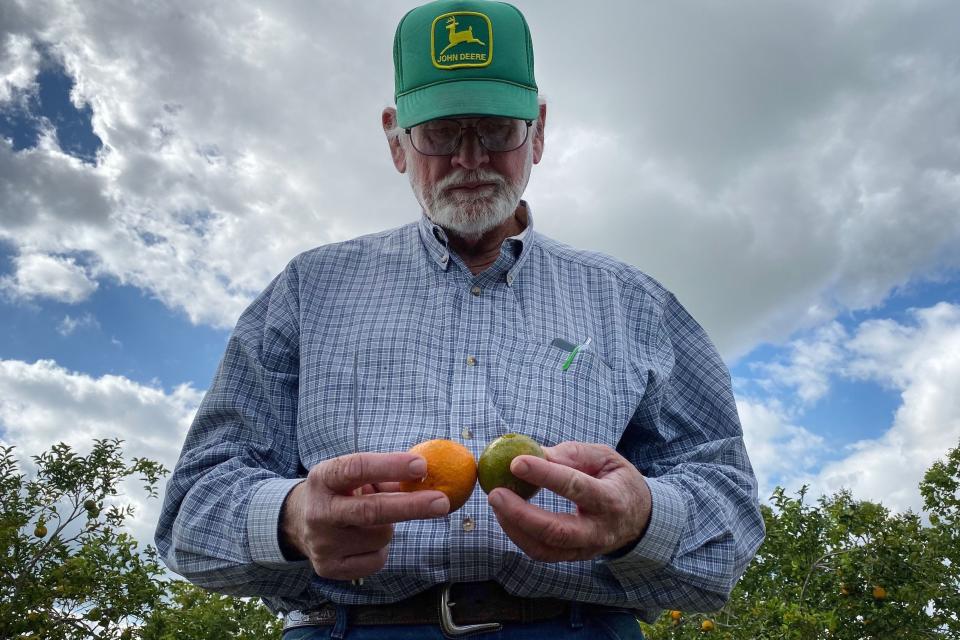It's not just high gas prices: The price of citrus fruit increased with inflation, CPI report shows
When you think about high prices these days gas is probably the first thing you think of. But last month Americans saw even higher price increases for citrus fruits than gas.
Even before President Joe Biden banned Russian oil earlier this week, Americans paid 6.7% more for gas to fuel cars in February compared to the month before . Meanwhile citrus fruits last month cost Americans 6.8% more compared to January, according to data from the Consumer Price Index published Thursday.
That’s the highest one-month percentage increase since 2007 when a citrus-killing freeze killed off navel oranges in California, which at the time supplied 95% of the fruit to the country in the winter, The New York Times previously reported.
INFLATION HISTORY: If you think inflation is wild now, look at how it has spiked over the past century
CPI REPORT: Inflation climbed at fastest pace since 1982 as consumer prices rose 7.9%
Now the soaring prices are being driven by supply constraints in Florida, where the majority of citrus fruits consumed in the U.S. are produced.
The state is set to produce 41.2 million boxes of oranges this year, the smallest yearly crop since World War II, according to a U.S. Department of Agriculture report published Wednesday. At its peak, Florida produced 244 million boxes in the 1997-98 season.

Producers are still suffering from the effects of Hurricane Irma, which occurred in 2017 and destroyed thousands of citrus-growing trees, said Shelley Rossetter, assistant director of global marketing at the Florida Department of Citrus.
Additionally, crop yields are significantly lower than prior years as a result of citrus greening, a bacterial disease that causes citrus trees to produce smaller, more bitter-tasting fruit, Rossetter added.
Citrus producers in Florida are also seeing their production costs go up because of inflation.
That said, consumers seem to be shrugging off higher prices. “Orange juice remains in the cart for many consumers,” she said, adding that they’re “encouraged by the demand” at retailers across the country.
PANDEMIC DEMAND: As coronavirus pandemic spikes orange juice sales, a Florida citrus grower gets squeezed
TIPS TO SAVE: How to save money at the pump as gas prices hit all-time high with Russian invasion of Ukraine
Overall the price increase for citrus fruits had a negligible effect on inflation last month. It accounted for 1.5% of the 0.8% price increase Americans experienced across all goods and services, while the price increase for gasoline used to power cars accounted for one-third of the overall price increase.
Economists predict that gas will make an even more significant dent in March’s CPI report as gas prices continue to increase from the oil disruptions caused by the Russia-Ukraine war.
This article originally appeared on USA TODAY: Gas prices are up, but so are costs of orange, citrus amid inflation

 Yahoo Finance
Yahoo Finance 